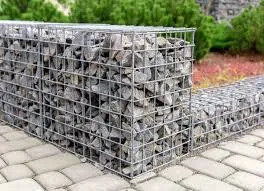-
 Phone:
Phone: -
 Email:
Email:

Exploring the Benefits of Rock Netting for Erosion Control and Slope Stability
Rock Netting An Innovative Solution for Soil Stabilization and Erosion Control
In an era of rapid industrialization and urban development, the protection of our natural landscapes has become increasingly crucial. One effective method to combat soil erosion, stabilize slopes, and promote environmental sustainability is rock netting. This innovative technique, which involves the use of net-like structures made from various materials to support and protect rocks and soils, is gaining traction in the fields of civil engineering and environmental management.
What is Rock Netting?
Rock netting is a method that integrates natural and engineered materials to create a supportive framework that holds rocks, boulders, and other materials in place. It typically involves the installation of a network of wire mesh or geotextile mats on slopes, riverbanks, or areas prone to erosion. These nets serve multiple purposes they not only hold rocks in position to prevent them from sliding or rolling away but also protect the soil underneath from water runoff and wind erosion.
Applications of Rock Netting
The applications of rock netting are vast, spanning various sectors, including construction, infrastructure maintenance, and environmental conservation. Here are a few significant applications
1. Slope Stabilization In hilly or mountainous terrains, the risk of landslides is prevalent. By using rock netting, engineers can create stable slopes that prevent debris from collapsing, ultimately protecting roads, homes, and other structures built on or near these slopes.
2. Erosion Control in Riverbanks Rivers and streams are prone to erosion, which can lead to the loss of land and habitats. Rock netting provides a physical barrier that reduces the velocity of water against the banks, minimizing the risk of erosion while maintaining the existing ecological balance.
3. Revegetation Support When combined with other methods like planting vegetation, rock netting can help facilitate the establishment of plant roots, further securing the soil. This is particularly useful in reforestation and habitat restoration projects, where the aim is to create a stable ecosystem.
rock netting

4. Protection of Infrastructure The use of rock netting is instrumental in protecting critical infrastructure, such as highways and railways, from rockfalls and landslides. By anchoring loose materials and creating a buffer zone, netting acts as a preventive measure against potential disasters.
Materials and Techniques
The effectiveness of rock netting largely depends on the materials used and the techniques employed during installation. Commonly used materials include galvanized steel wire, high-density polyethylene (HDPE), and biodegradable geotextiles, which offer different advantages in terms of durability and environmental impact.
There are also various installation methods, such as anchored nets, where the mesh is secured into the ground, and hanging nets, which are suspended across slopes. The choice of method depends on factors such as the slope's angle, soil type, and the extent of erosion.
Benefits of Rock Netting
One of the primary advantages of rock netting is its ability to mitigate environmental impacts. Unlike concrete or other heavy materials, rock netting is often more environmentally friendly and can blend in with the natural landscape. Furthermore, it promotes biodiversity by allowing plants and animals to thrive in and around the treated area.
Additionally, rock netting is relatively cost-effective compared to traditional methods of erosion control. Its installation requires less labor and time, and the maintenance is generally minimal, allowing for long-term solutions without significant ongoing costs.
Conclusion
In conclusion, rock netting presents a promising solution for addressing critical challenges related to soil stabilization and erosion control. By effectively combining engineering techniques with natural elements, it supports the integrity of our landscapes and promotes sustainable development. As the world continues to face the consequences of environmental change and urbanization, embracing innovative solutions like rock netting will be essential for preserving our ecosystems and protecting our infrastructure for future generations.
-
Wire Mesh for Every Need: A Practical SolutionNewsJul.25,2025
-
Steel Fences: Durable, Secure, and Stylish OptionsNewsJul.25,2025
-
Roll Top Fencing: A Smart Solution for Safety and SecurityNewsJul.25,2025
-
Cattle Farm Fencing Solutions for Maximum SecurityNewsJul.25,2025
-
Affordable Iron Binding Wire SolutionsNewsJul.25,2025
-
Affordable Galvanized Wire SolutionsNewsJul.25,2025
-
Wire Hanger Recycling IdeasNewsJul.25,2025








